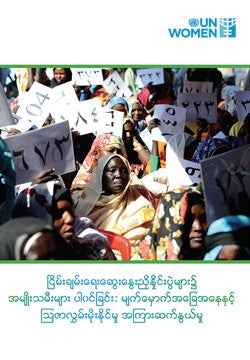
Women's Participation in Peace Negotiations: Connections between Presence and Influence

Women’s striking absence from peace talks has become one of the standard features of these important conflict resolution forums. Since 1992, fewer than 10 per cent of peace negotiators have been women, and there has been little improvement in this figure since the passage of resolution 1325 (2000). This situation cries out for determined and concrete action requiring mediators and members of negotiating teams to include women. Mechanisms are also needed to ensure regular consultations between mediators, parties to peace talks and women’s peace groups. Observer status should be granted to representatives of women in civil society from the very start of peace processes and not, as often happens, only at the very end.
This publication reviews the data on the number of women participating in peace talks. It provides a structured overview of the means by which women have been able to engage in these processes and the conditions under which they have been able to influence the outcome. Awareness of these conditions will help inform interventions to build women’s access to and voice in UN-mediated peace processes. Since 2011, UN Women and the UN Department of Political Affairs have committed to a joint gender and mediation strategy and have built on the good practice examples identified here.
The publication is part of the UN Women Sourcebook on Women, Peace and Security which aims to support improved implementation of the Women Peace and Security resolutions. It analyzes gender issues in a number of peace and security areas, both normative and operational, and offers guidance to support operational work.
